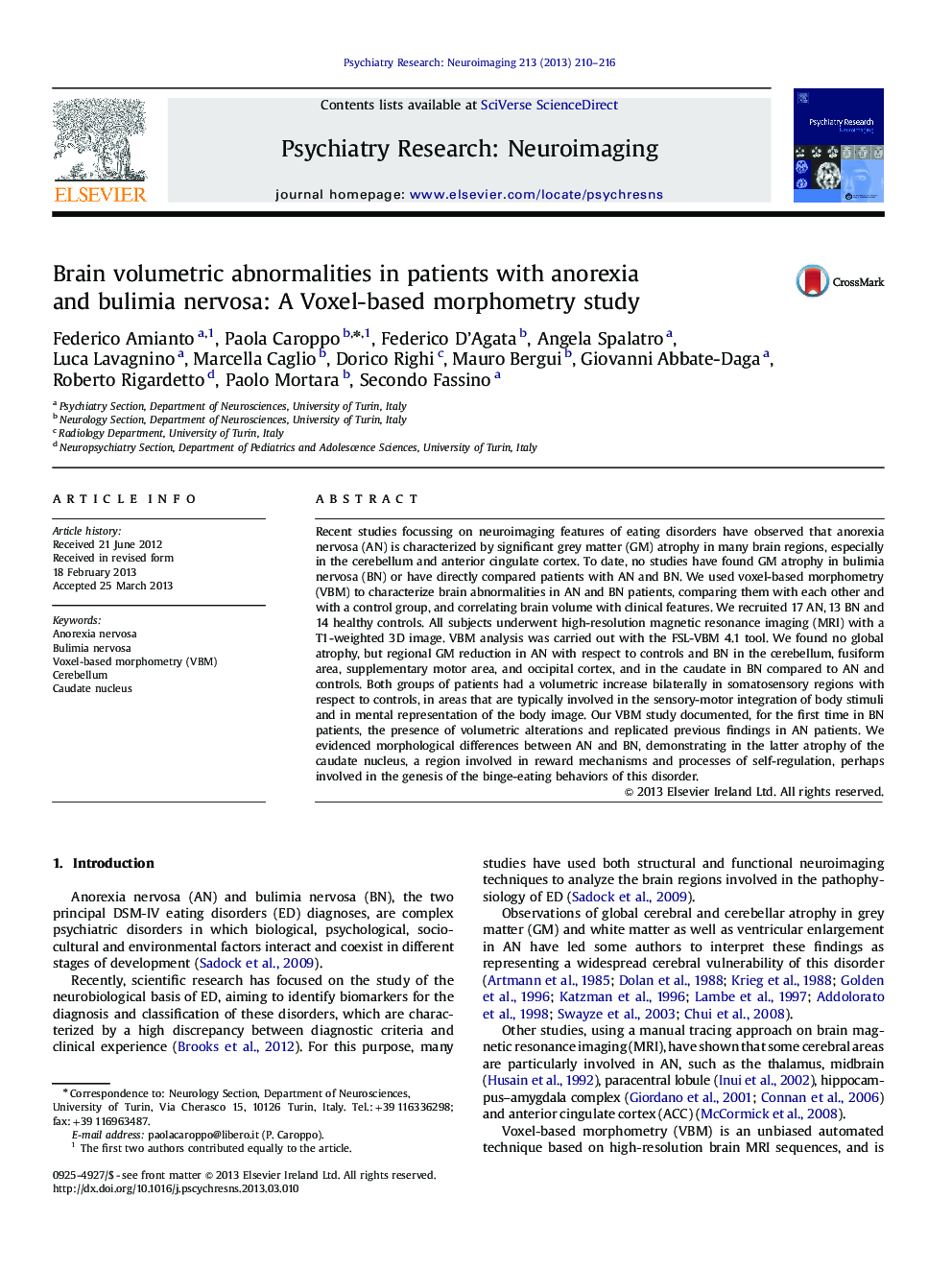| Article ID | Journal | Published Year | Pages | File Type |
|---|---|---|---|---|
| 335597 | Psychiatry Research: Neuroimaging | 2013 | 7 Pages |
Recent studies focussing on neuroimaging features of eating disorders have observed that anorexia nervosa (AN) is characterized by significant grey matter (GM) atrophy in many brain regions, especially in the cerebellum and anterior cingulate cortex. To date, no studies have found GM atrophy in bulimia nervosa (BN) or have directly compared patients with AN and BN. We used voxel-based morphometry (VBM) to characterize brain abnormalities in AN and BN patients, comparing them with each other and with a control group, and correlating brain volume with clinical features. We recruited 17 AN, 13 BN and 14 healthy controls. All subjects underwent high-resolution magnetic resonance imaging (MRI) with a T1-weighted 3D image. VBM analysis was carried out with the FSL-VBM 4.1 tool. We found no global atrophy, but regional GM reduction in AN with respect to controls and BN in the cerebellum, fusiform area, supplementary motor area, and occipital cortex, and in the caudate in BN compared to AN and controls. Both groups of patients had a volumetric increase bilaterally in somatosensory regions with respect to controls, in areas that are typically involved in the sensory-motor integration of body stimuli and in mental representation of the body image. Our VBM study documented, for the first time in BN patients, the presence of volumetric alterations and replicated previous findings in AN patients. We evidenced morphological differences between AN and BN, demonstrating in the latter atrophy of the caudate nucleus, a region involved in reward mechanisms and processes of self-regulation, perhaps involved in the genesis of the binge-eating behaviors of this disorder.
